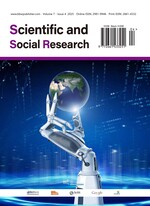The Dissemination Practice of Shixianshu in the Western Regions during the Qing Dynasty
Abstract
The dissemination and implementation of Shixianshu (the official almanac) in the Western Regions during the Qing Dynasty is a typical example of the cross-regional spread of Central Plains calendrical culture. This article takes the multilingual Shixianshu as the starting point and, combined with archival materials and physical relics, systematically examines the westward dissemination path of the calendar and its cultural shaping of Western Regions society. By simultaneously publishing Shixianshu in Manchu, Chinese, and Mongolian languages, it not only carried cultural symbols such as the twenty-four solar terms and agricultural time sequences of the Central Plains but also accommodated the monthly-order traditions of nomadic tribes, forming a cross-cultural dialogue pattern of “one calendar integrating three customs”. From the Hami Oasis, where farming was arranged according to the solar terms, to the Ili River Valley, where herders selected grazing areas by observing celestial phenomena, Shixianshu reconstructed the daily life rhythms of the people in the Western Regions based on scientific data. The concurrent use of the “Kitchen God” calendar paintings and the official almanac further promoted the in-depth integration of the Han cosmology and the folk customs in the Huijiang region. This process reveals that the dissemination of the calendar during the Qing Dynasty, through the “technology-symbol” dual-coding strategy, transformed the time order into a cultural integration bond, constructing a shared time-cognition framework for diverse ethnic groups. Its multi-modal text strategy still has implications for contemporary cross-cultural communication.
References
The First Historical Archives of China, n.d., Official Letter Regarding the Routine Distribution of Shixianshu for the 38th Year of the Qianlong Reign to Uliastai, Ili, and Other Places. File Number: 03-0185-2470-016.
The First Historical Archives of China, n.d., Official Letter Regarding the Delivery of Shixianshu Entitled by the Generals and Ministers of the Military Camps in the Western and Northern Routes. File Number: 03-0178-1797-050.
Veritable Records of Emperor Gaozong of the Qing Dynasty, 1985, Photocopy Edition by Zhonghua Book Company. Zhonghua Book Company, Beijing.
Yun T, n.d., Imperial-Approved Regulations of the Great Qing Code. Siku Quanshu Edition.
Tuo J, n.d., Imperial-Approved Examples of the Great Qing Code. Photocopy Edition by the First Historical Archives of China.
Zhang TY, 1988, Comprehensive Examination of Qing Dynasty Literature. Zhejiang Ancient Books Publishing House, Hangzhou.
Liu GS, 1986, History of Ancient Chinese Postal Service. People’s Posts and Telecommunications Publishing House, Beijing.
Chen JJ, Xu GQ, Chongzhen LS, 1986, Collected Papers on the Study of Xu Guangqi. Xuelin Publishing House, Shanghai.
Jin Y, 2016, Re-analysis of the Three Surveys in the Western Regions during the Qianlong Reign. Western Regions Studies, 2016(1): 27–34.
Cui S, n.d., Continued Explanation of Archaeology. Qing Jifu Congshu Edition.
Zhang YL, Wang ZH, 2024, Translation and Governance: A Study on the Translation of Ethnic Languages in Qing-Dynasty Shixianshu. Ethnic Translation, 2024(2): 22–28.
Wang YC, 2018, Shixianshu in the Qing Dynasty and the Formation of Modern China as a Unified Multi-ethnic Country. Social Sciences in China, 2018(5): 20.
Xiao C, Chun H, 2020, The Whole Story of the Qing Court Issuing the Mongolian-Language Shixianshu. Palace Museum Journal, 2020(6): 7.
Zhou S, 2021, A Textual Research on the Shixianshu Collected by Ji Xiaolan. Suzhou Museum Studies, 2021: 102–110.
Chun H, 2016, On the Whole Story of Issuing the Chinese-Language Shixianshu in the Qing Dynasty. The Sixth Volume of Manchu Studies.

